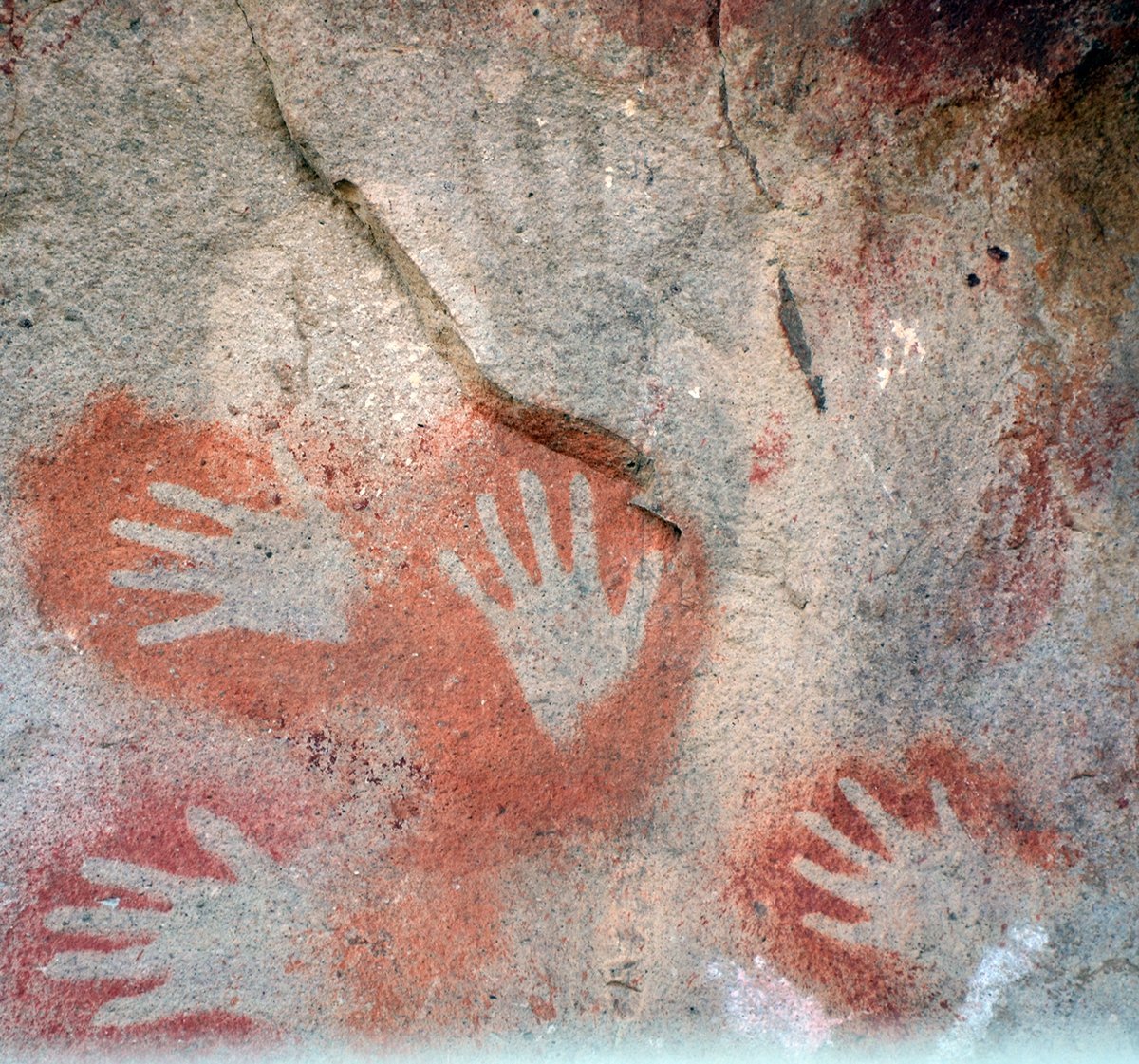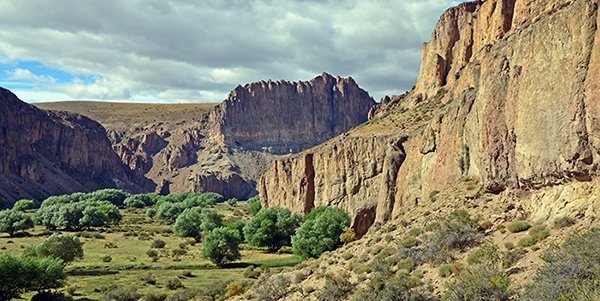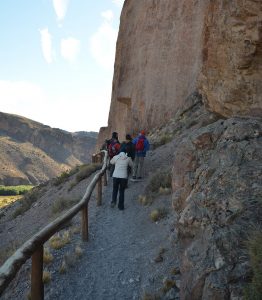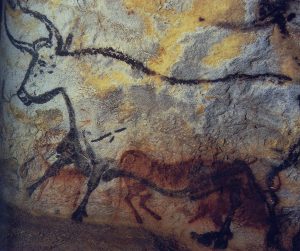
Cuevos de los Manos
Cuevos de las Manos is a UNESCO protected archeological site bordering Francisco P Moreno National Park in Argentina’s Patagonia. To get there I caught a local bus that rambled along the dusty road from Puerto Moreno, an isolated village about a 150 kilometers in every direction from nowhere. During my three-hour trip, the only visual markers I noticed between the flat earth and sky were fences that kept nothing in or out.
Then like a splat of paint on a canvass, the red-streaked canyon, framed by green vegetation and a blue river, were an exceptional contrast to the bleak pampas landscape we were leaving. The bus crawled downhill for about half a kilometer to the entrance of the site. The Rio Pinturas, flowing another 500 feet below us, originates at Lago Buenos Aires located on the pampas above. The river carved the canyons millions of years ago and the water is still digging its way deeper into the earth as it journeys to the ocean.

I paid my fee and joined the guided tour along a narrow walkway that skirted rock overhangs in the steep canyon walls. My first view of the paintings came within five minutes of walking. The guide explained, in both Spanish and English, about the paintings, their age, the method of production and what they represented. As we continued along the trail, she pointed out depictions of guanacos, rheas and hunters, all who lived here about 10,000 years ago. Every painting was surrounded with stenciled handprints. These were the historical records of people’s lives. I was fascinated.

The first cave paintings ever studied by scientists were found in 1903 at El Castillo, in Spain. Those paintings are thought to have been created by Neanderthals about 37,300 years ago and include images of hands like those at Cuevas de las Manos.
France too has ancient and beautiful cave paintings. Those at Chauvet are believed to be about 33,000 years old and those at Lascaux, discovered in 1943 are thought to be about 17,000 years of age. These works, like the paintings at Cuevas de las Manos, portray hunting scenes with birds, bulls, hyena and deer but the most amazing is the reproduction of a famous star cluster known today as the Summer Triangle. These paintings are thought to be about 16,500 years old. One sample at El Castillo w is a red dot on the ceiling that dates back 40,800 years. It is considered the oldest painting in the world.

There were similar cave paintings and prints found in Australia, in India and in Borneo. Those at Vallegrande in Bolivia are white hand stencils but have later drawings of humans and animals over top the early prints. The temples at Tikal in northern Guatemala have stencil prints thought at the time they were found in the 1970s, to be graffiti.
The paint used for the paintings was derived from mixing local minerals and every day liquids such as tea or fruit juices and sometimes included blood, to create the colours the artists wanted. After the dyes were mixed, the artists placed the dye in their mouths and blew the paint through a hollowed out animal bone so the paint landed over his/her hand that had been placed against the cave wall. When the hand was removed, the results were that of a stencilled hand and each person’s handprint looked different.
The latest explanation for the handprints at Cuevas de las Manos, besides being a signature, is that it was a right of passage for young people, probably boys, who left their print after performing some skill required for survival. Differences can be seen in size and shape of the hands with most being about the same as those belonging to a 13-year old adolescent. Usually, although not always, the prints are of the left hand, probably because the dominant right hand held the pipe through which they blew the paint. There is even one print with six fingers at Cuevas. In Africa numerous prints are missing fingers, suspected to be missing due to religious rituals.
Once I finished looking at the paintings and said goodbye to the guides, I walked through the canon valley along the river. It was cool and quiet and my thoughts went to those early people who travelled from Africa to Europe to India and Asia. Some then migrated, while the oceans were lower, over a land bridge between Asia and Alaska and moved south either by foot or boat along the west coast of America. I imagined them sitting beside campfires, telling stories to youngsters about hunting or leaving their history on cave walls. Some of these people eventually arrived at Monte Verde, directly west over the spine of the Andes from Cuevas de las Manos 12,500 to 14,500 years ago.
In this area there are numerous caves with handprints on them, some dated as late as 550 BC to 180 BC. Regardless of the age of the prints, the most interesting fact I can derive from this is that these people were the same as us. They travelled, they hunted, and they produced art and left a signature.

Such an amazing article! It inspires me to get out there with Mother Nature. As well as travelling to other foreign countries and learning their culture